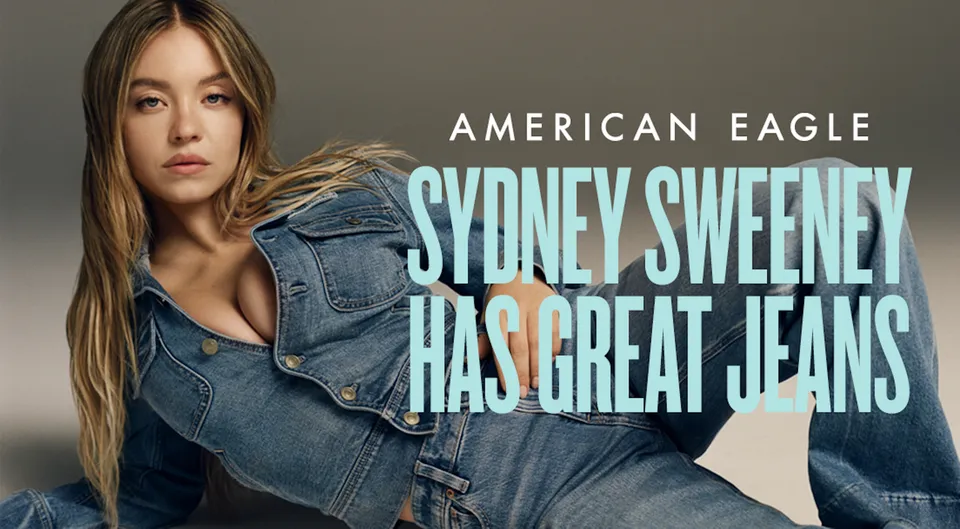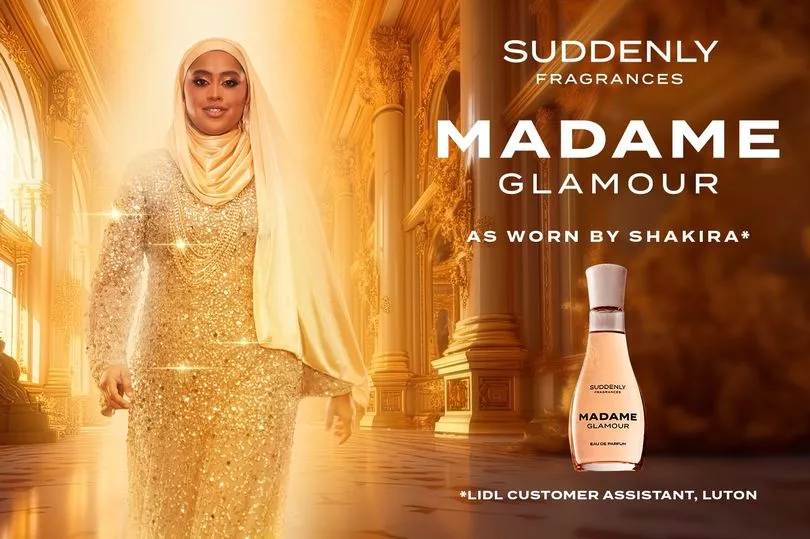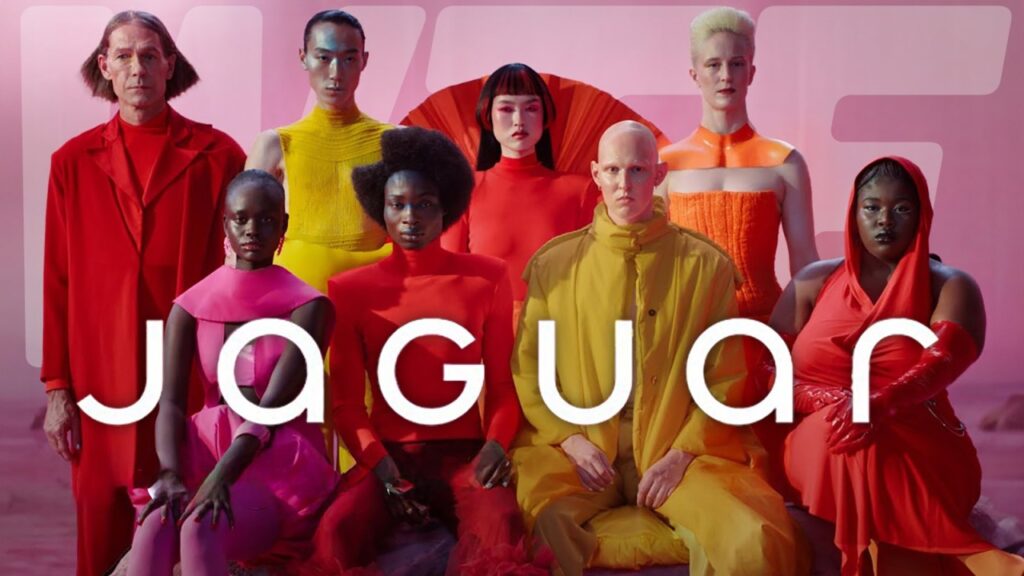After watching many brands and their efforts to try to capture our attention, I’ve learned one thing: marketing is rarely boring. But every now and then, a campaign comes along that makes you spill your morning coffee. The American Eagle “Sydney Sweeney Has Great Jeans” campaign, was precisely that kind of moment. It was a whirlwind of celebrity power, clever wordplay, and, well, a whole lot of controversy.
So, let’s pull back the curtain, shall we? We’ll look at what American Eagle was trying to achieve, what actually happened, and whether this was a calculated gamble that paid off, or a genuine misstep that left everyone scratching their heads.
The Stage Was Set: A Brand in Need of a Buzz
American Eagle, a brand synonymous with denim for generations, found itself in a bit of a bind. Heading into 2025, they reported a 5% year-over-year revenue dip in Q1, even pulling their 2025 guidance due to broader economic jitters. Not exactly a party. They needed a spark, a jolt, something to make people “reconsider and reengage” with the brand.
Craig Brommers, American Eagle’s Chief Marketing Officer, saw the back-to-school season as their “Super Bowl”. This wasn’t just about selling jeans; it was about re-establishing American Eagle as the denim destination for Gen Z, a generation that, let’s be honest, doesn’t just buy clothes, they buy into values and experiences. The goal? To “cut through in culture”. And boy, did they cut through.
Their big idea? Go all-in on one celebrity. A bold move, considering their past campaigns featured a roster of stars. But for Brommers, Sydney Sweeney was “the biggest get in the history of our brand”. Why Sweeney? She’s a rare talent, able to be “the face of a dual-gender brand” , sitting right “at the intersection of fashion, fame and digital culture”. She was, in his words, “that sweet spot”, not too young, not too mature. She even designed her own “Sydney Jean” with a butterfly motif, with proceeds going to Crisis Text Line, a mental health support service. A nice touch, right? A little bit of good karma mixed in with the marketing.

The Campaign: A Masterclass in Modern Reach
American Eagle didn’t just dip a toe in the water; they cannonballed. They unleashed a multi-channel blitz that was, frankly, impressive:
- Big, Bold Billboards: Think 20-story 3D billboards in Times Square , ads plastered on buses across the U.S. , and even a first-time appearance on the colossal Las Vegas Sphere. These weren’t subtle whispers; they were shouts designed to “catch your attention”.
- Digital Dominance: They poured money into paid social media and embraced new platforms. They were “one of the first retail brands” to post Snap Stories with direct messages from Sweeney. They launched their first dedicated Instagram broadcast channel for that “one-on-one conversation” feel. They even advertised on BeReal, aiming for “intimate and friendly” social interactions. Plus, AI-enabled try-on technology for customers. Talk about covering your bases!
The whole idea was to make it feel “personal”. Sweeney’s long-time stylist, Molly Dickson, curated the denim looks. Sweeney herself had even organically mentioned American Eagle in other campaigns, adding a layer of authenticity. It was all about her “girl next door charm and main character energy, paired with her ability to not take herself too seriously”.
So far, so good, right? A big star, a massive media spend, and a cause marketing tie-in. What could possibly go wrong?
The Firestorm: When “Cheeky” Becomes “Controversial”
Ah, the best-laid plans. The campaign’s tagline, “Sydney Sweeney Has Great Jeans,” was meant to be a playful pun on “great genes”. A video even showed Sweeney crossing out “genes” and writing “jeans” on a billboard. In another clip, Sweeney’s voiceover explicitly stated, “Genes are passed down from parents to offspring, often determining traits like hair color, personality and even eye color. My genes are blue”.
And that’s when the internet collectively gasped, then roared.
Critics quickly pointed out that “great genes” carries some serious historical baggage. It’s a phrase “long associated with white supremacist ideals, used to promote whiteness, thinness, and eurocentric beauty standards”. When paired with Sydney Sweeney, a “blue-eyed, blonde-haired woman often labelled the embodiment of ‘classic American beauty'”, the message, for many, started to “resemble eugenic messaging”.
Eugenics, for those who might need a refresher, is a discredited theory that aimed to “improve the genetic quality of the human population,” historically popular among white supremacists who believed in the “genetic superiority of Nordic, Germanic, and Anglo-Saxon peoples”. Suddenly, a seemingly innocent pun felt… loaded.
Social media, particularly TikTok and X (formerly Twitter), erupted. People posted detailed “explainers,” drawing parallels to language used in Nazi Germany. Comments flew: “NAZI propaganda,” “fascist,” and questions like, “They could’ve gotten a beautiful Black woman to do this ad, but they picked a yt [white] woman instead…”. The backlash “slammed the ad for a lack of diversity and poor messaging”.
Now, some folks, like TV host Megyn Kelly, jumped to the campaign’s defense, calling the accusations “absurd” and blaming the “lunatic left”. They argued it was clearly a reference to Sweeney’s body and the product, not her racial makeup. Others simply dismissed it as an “overexaggeration”.
But here’s the kicker: through all this, neither Sydney Sweeney nor American Eagle issued a public statement addressing the uproar. Their Instagram post for the campaign remained live, though comments seemed to be heavily moderated. Silence, in this case, spoke volumes.

The Numbers Game: Did It Work?
Despite the firestorm, or perhaps because of it, the campaign delivered some eye-popping financial results.
- Stock Soared: American Eagle’s shares shot up 6% during the trading session and then a dramatic 17% in after-hours trade. That’s a total 17% stock rally post-launch.
- Market Cap Jump: The company’s market capitalization increased by $400 million in a single day , pushing its market cap past $2 billion (yes, billion, not million, despite what some reports might imply) for the first time in months.
- “Meme Stock” Status: Financial analysts quickly labeled American Eagle as a “new class of meme stocks”. This was fueled by individual retail investors, often coordinating on platforms like Reddit, who “piled into a stock”. American Eagle had a high short interest (13% of shares sold short), meaning short sellers were “caught off guard” and had to buy back shares, further inflating the price.
Beyond the stock market, the campaign certainly generated buzz. The main campaign video on American Eagle’s Instagram page racked up over 1.1 million views. Analysts noted the strategy “helped reconnect with Gen Z and revived the brand’s market buzz”.
So, financially, it was a win. But at what cost? While the campaign “did boost business,” it came with the explicit acknowledgment that “social goodwill may have taken a hit”. Experts warned of “longer-term reputational risks,” especially with Gen Z and millennial consumers, who increasingly prefer socially conscious brands.

Calculated Controversy or Tone-Deaf Blunder? My Take.
This is where it gets interesting, isn’t it? Was American Eagle genuinely oblivious to the historical weight of “great genes,” or was this a calculated risk, a deliberate attempt to “push buttons” and “break through the noise” in a crowded market?
From my vantage point, having seen countless campaigns rise and fall, I lean towards a calculated risk that perhaps misjudged the depth of the cultural nerve it would strike. Allen Adamson, a seasoned advertising expert, suggested this campaign was a conscious effort to “break through in a world where everyone is screaming and saying, ‘Look at me, look at me!'”. For “commodities” like jeans, where differentiation is tough, “people remember disruption”. He even compared it to Brooke Shields’ controversial 1980 Calvin Klein ad.
Adamson also hinted at a broader shift, suggesting this campaign might signal a move away from the “more inclusive form of advertising seen over the past few years”. For years, brands felt pressure to diversify casting, which was good for business because consumers saw themselves reflected. But once that became “commonplace,” it lost its ability to stand out. So, perhaps, some brands are now seeking new forms of disruption, even if it means being provocative rather than solely inclusive.
Here’s my honest opinion: I believe American Eagle knew the pun was edgy. They likely anticipated some chatter, maybe even a little eye-rolling. But I doubt they foresaw the accusations of eugenics and Nazi propaganda. That’s a whole different ballgame. The combination of the phrase, Sweeney’s image, and the brand name “American Eagle” created a perfect storm of unintended (or perhaps underestimated) associations.
The silence from both the brand and Sweeney is telling. In traditional crisis management, you respond swiftly, transparently, and empathetically. Their silence suggests they either believed any response would simply add fuel to the fire, or they were content to let the controversy amplify the campaign’s reach, prioritizing immediate visibility and financial gain over immediate reputational appeasement. It’s a risky play, a high-stakes poker game where brand trust is the chip.
This incident highlights a crucial point: “intent doesn’t negate impact”. Especially when mass-market ads operate in an ecosystem shaped by decades of race, class, and beauty privilege. What seems like “cheeky wordplay” to a marketing team can be perceived as deeply offensive by a socially engaged audience.
6 Key Takeaways for Your Next Campaign
So, what can we, as marketing professionals, learn from American Eagle’s wild ride? Here are my six key takeaways:
- Cultural Sensitivity is Your North Star, Not an Afterthought: You simply cannot afford to be tone-deaf in today’s world. Every word, every image, every association needs rigorous scrutiny. This means bringing diverse perspectives to the table before launch. Don’t just check boxes; truly understand the historical and social context of your messaging.
- Impact Trumps Intent, Every Time: You might mean well, but if your message is misinterpreted or causes offense, your good intentions won’t save you. The audience’s perception is your reality. Always ask: “How might this be perceived by someone not in our marketing bubble?”
- The Power (and Peril) of Celebrity: A-list talent like Sydney Sweeney can deliver incredible reach and immediate financial boosts. But their personal brand, and the associations people have with them, can also amplify controversy. Choose your partners wisely, and understand that their public persona becomes intertwined with yours.
- Gen Z Demands Authenticity, Not Just Buzz: This generation doesn’t just buy products; they buy values . They are the “activist generation” , quick to boycott brands that don’t align with their social justice, DEI, and mental health priorities . If your cause marketing feels like a cover-up for problematic messaging, they’ll see right through it. They want “real action” and “receipts” .
- Short-Term Gains Can Mask Long-Term Harm: Yes, American Eagle saw a stock surge. Yes, they got massive attention. But at what cost to their long-term brand equity and customer loyalty? “Short-term hype” can indeed lead to “long-term harm” . Building lasting trust with your audience is a marathon, not a sprint. Don’t sacrifice future relationships for immediate headlines.
- Silence Isn’t Always Golden in a Crisis: While American Eagle chose to remain silent, it’s a strategy fraught with risk. In an era of instant information and heightened accountability, a lack of response can be interpreted as indifference, or even an admission of guilt. Sometimes, a transparent, empathetic, and timely statement, even if it means acknowledging a misstep, can be crucial for managing reputation and rebuilding trust.

The Final Word
The American Eagle Sydney Sweeney campaign is a fascinating case study. It reminds us that marketing today is a high-wire act, balancing creativity with cultural awareness, commercial goals with social responsibility. It shows us that while controversy can certainly generate attention and even immediate financial returns, it comes with a hefty price tag in terms of brand trust and long-term reputation.
As you craft your next campaign, ask yourself: Are you truly connecting with your audience, or are you just making noise? Are you building lasting relationships, or simply chasing fleeting headlines?
The answers will shape not just your brand’s future, but perhaps, the very fabric of our shared cultural conversation.




